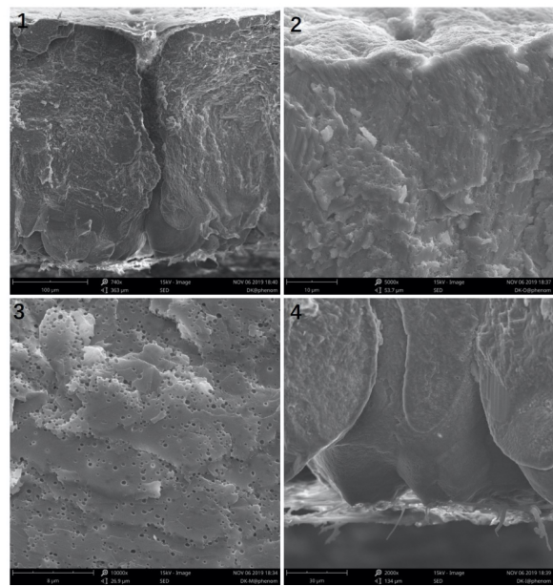Uncover the microcosm of the eggshell
Uncover the microcosm of the eggshell
Eggs are known to us as chicken eggs and food, and are mainly composed of three parts: eggshell, egg white and egg yolk. Next, let Dabai, who loves to eat eggs, use the scanning electron microscope to explore the mysteries of egg shells with everyone.
the
The eggshell is relatively hard and can be used to protect the white and yolk, perform gas exchange and provide minerals for embryonic development. There will be a layer of eggshell membrane tightly attached to the inside of the eggshell. With the help of a scanning electron microscope, we can observe the thickness of the eggshell and eggshell membrane. A cross-sectional scanning electron microscope image of a common egg shell is shown in the figure below.

Figure A: SEM images of eggshell and eggshell membrane
A closer look at the eggshell reveals that it can be subdivided into three parts with varying microstructures:
1. The outer layer of the eggshell is dense and fine, with a certain strength, called cutin (as shown in 2 in the figure below).
2. The middle layer is spongy and densely covered with many small holes (as shown in 3 in the figure below).
3, The inner layer is cone-shaped, and the space between can accommodate air, this layer can be called papillary layer (shown as 4 in the figure below).

Figure B: Eggshell cross-section and three-layer structure (1-eggshell cross-section; 2-shell cutin; 3-middle layer; 4-papillary layer)
Through the energy spectrum element analysis, it is found that the eggshell mainly contains three elements: carbon, oxygen and calcium. It can be inferred that the main component of the eggshell is calcium carbonate. The energy spectrum analysis results are shown in the figure. No wonder there is a saying that egg shells can supplement calcium, but it is not a wise way to eat egg shells, and Dabai does not recommend it~

Figure C: EDS Analysis of Egg Shell Components
Observation on the surface of the eggshell reveals holes with a diameter of about 30 microns, called stomata, which are channels for gas exchange inside and outside the egg. Moisture in the egg can also be volatilized through the stomata, but they also provide channels for microbial invasion. As shown in Figure B1, air pores run through the eggshell. Figure D shows the pores on the surface of the eggshell.
Figure D: Air pores on the surface of an egg




